Review: At la Diosa de los Moles, otherworldly cooking from L.A.’s mole goddess
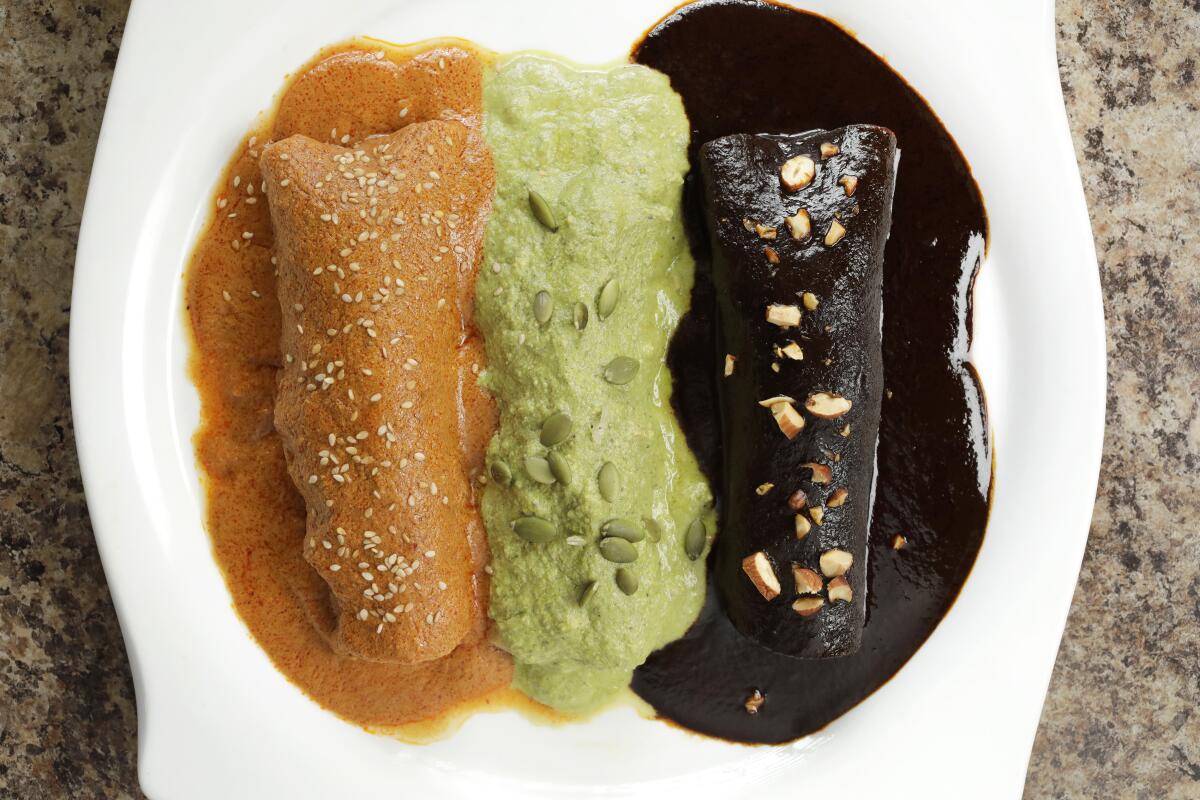
- Share via
At la Diosa de los Moles, a Mexican restaurant that opened in Paramount in late 2017, the first thing you may notice is the oversize portrait of chef and owner Rocío Camacho posted near the entrance to her restaurant.
In the photo, Camacho is dressed smartly in a custom gold-embroidered chef’s jacket, her face beaming over the host stand. The caption underneath is the chef’s long-standing nickname: la Diosa de los Moles — the Mole Goddess.
The nickname is no empty boast. Camacho alchemizes large quantities of dried fruit, aromatics, chiles, nuts, seeds and a pantryful of revolving spices into otherworldly, 40-something-ingredient moles.
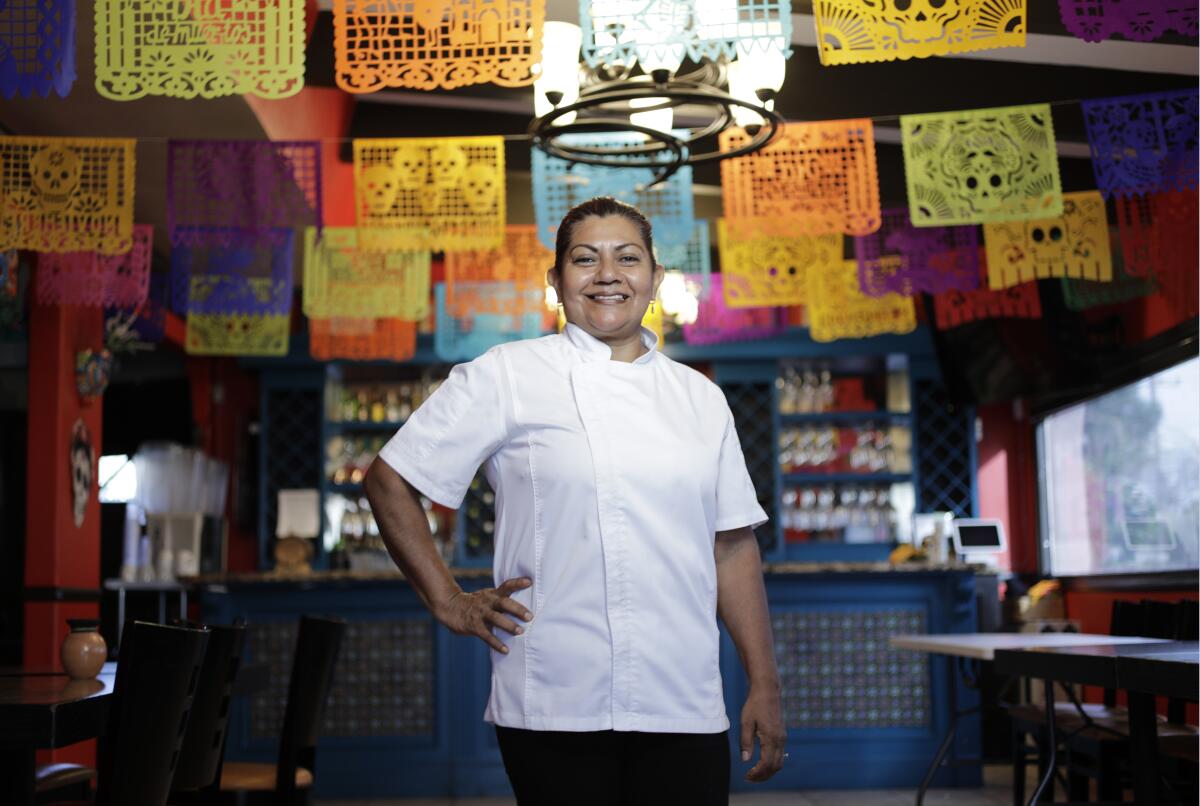
You can taste her lifelong allegiance to the craft in a dish of mole Oaxaqueño, an inky substance thick with ground chiles, toasted nuts, seeds and burnt bread ashes. The flavors catapult between smoke and spice and bitterness, roiling the palate in hypnotic waves.
If you’re a longtime mole connoisseur, there’s a good chance you’ve eaten the dish in another restaurant. In the last two decades, Camacho has cooked in top Mexican kitchens, most notably la Casita Mexicana, Moles la Tia and the ill-fated Rocío’s Mole de los Dioses in Sun Valley, ravaged by arson in 2015.
A native of Huajuapan de León, Oaxaca, she got her start in L.A. kitchens as a shrimp peeler, working her way to chef and independent restaurateur. (Along with la Diosa de los Moles, she also operates Rocío’s Mexican Kitchen in Bell Gardens). For a while, Camacho was a fixture on the Univision and Telemundo chat shows, where her story of perseverance and hard work played out in well-edited soundbites.
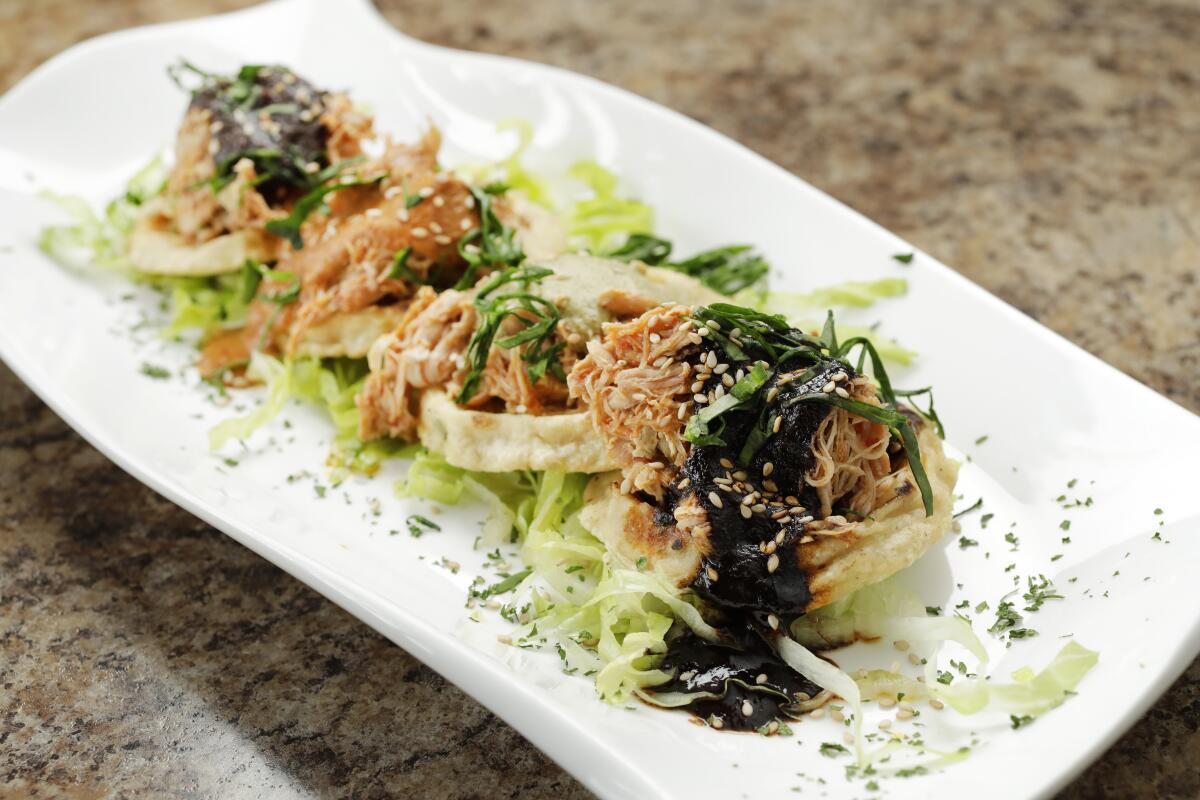
Steeped in a mole-making legacy that reaches back generations, many of her recipes are family heirlooms passed down through her maternal line. Camacho is an astute interpreter of inherited classics like the manchamanteles, her version of the darkly ruddy, “tablecloth staining” mole. It’s sharp with chile heat, lightly smoky, with a brooding spice that can be washed away only by large amounts of agua fresca.
Her mole Poblano balances bitter chocolate and pounded chiles with the sweetness of dried fruit. Mole verde is faintly tart and tangy with tomatillos and onions; her pipián rojo is lovely and tomato-rich with a tickle of spice.
There are currently about nine moles on the menu — the selections have been known to change — but I keep returning to Camacho’s pistachio mole, a voluptuously creamy, pastel green sauce lightly pinged with chile heat.
Moles are ladled over things like enchiladas, or teetering piles of rice and julienned vegetables and your choice of protein — the shrimp and filet mignon are solid options, although the meats are best used for mopping up errant pools of mole.
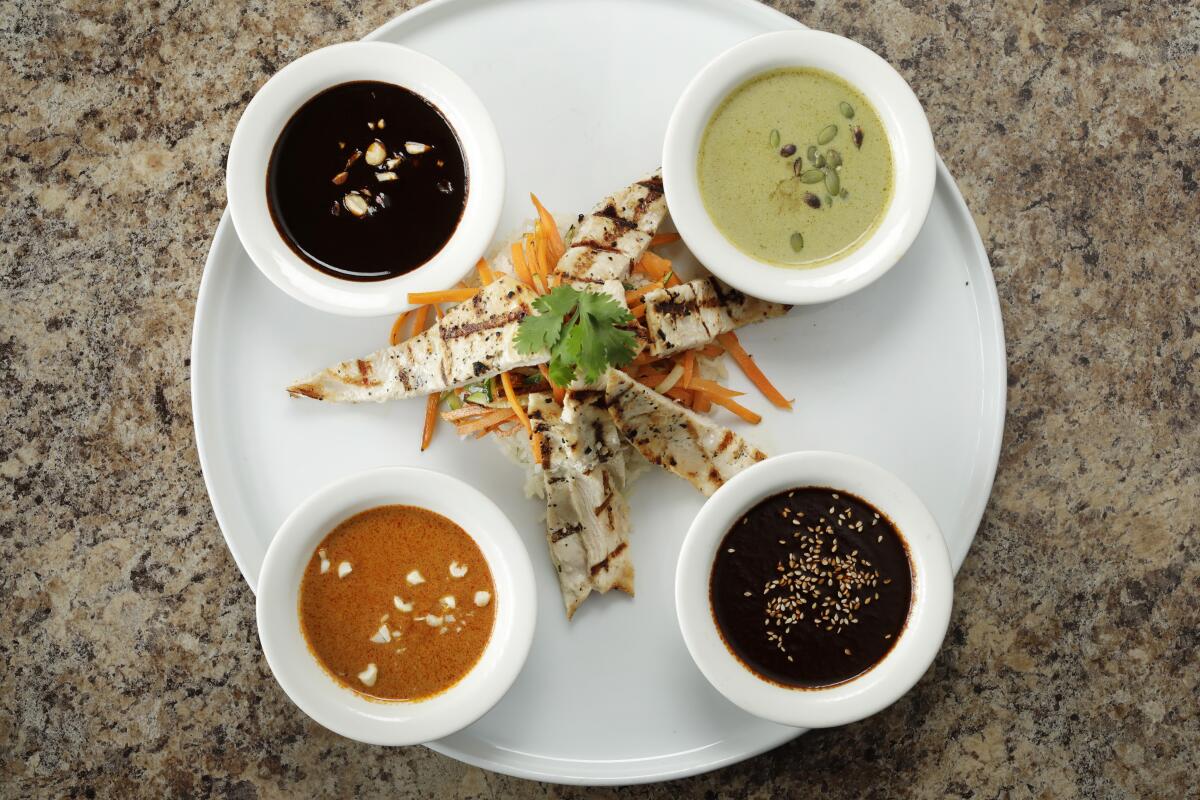
Camacho sometimes offers a mole sampler platter furnished with four varieties. It’s a splendid option when it’s available. A more reliable way to try various moles at once is to order picaditas, three masa cakes layered with shredded chicken and slick, heavy dollops of the mole Oaxaqueño, mole Poblano and the manchamanteles.
Beyond moles, there are crisp corn empanadas filled with squash blossoms, and griddled quesadillas paved with a paste of creamy, funky huitlacoche. Don’t miss the wonderful crema de elote, a silken-smooth soup of sweet white corn melded with sumptuous amounts of heavy cream.
Lately Camacho has been on a vegan kick, adding entrees like potato taquitos and hulking chiles rellenos stuffed with sweet potatoes. They are a nice alternative to the heavy proteins, pairing beautifully with any of the moles.
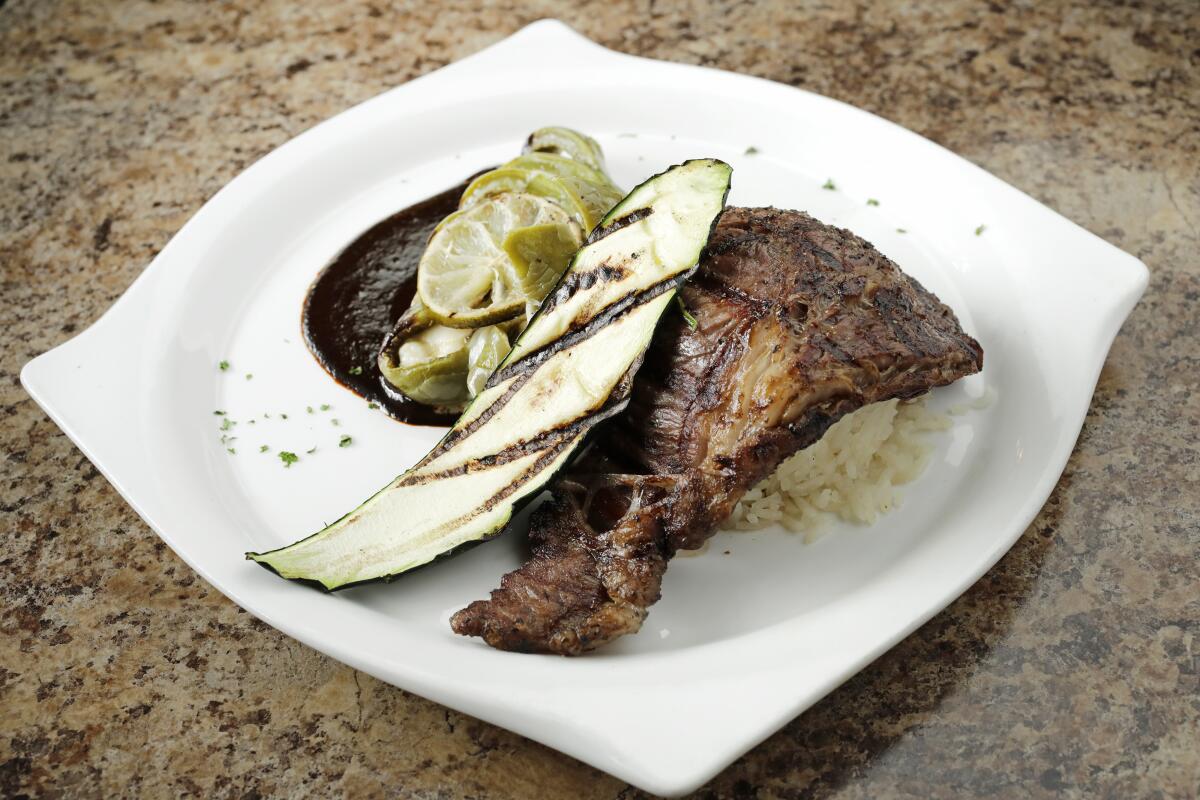
Along with regular table service, la Diosa de los Moles, which is open only for lunch on most weekdays, offers a daily brunch buffet that ennobles the genre with an assembly line of very good hot dishes: sweltering cauldrons of menudo; tacos de cazuela tucked into earthenware pots; stews of braised pork with nopalitos; and traditional clay pots brimming with mole Poblano (the mole selection on the buffet table changes daily).
On weekends, the dining room, festooned cheerfully with laundry-lines of papel picado and Mexican folk art, is open all day, filled with families and groups of people drinking mimosas and snacking on tortilla chips drizzled in mole.
And sometimes, amid the laughter and clink of stemware, you’ll catch a glimpse of the goddess herself emerging from the partially obscured kitchen, a cheerful blur in her chef’s coat. She has come out to mind the mole, stirring the clay pots on the buffet table before she disappears again into the kitchen.
la Diosa de los Moles
More to Read
Eat your way across L.A.
Get our weekly Tasting Notes newsletter for reviews, news and more.
You may occasionally receive promotional content from the Los Angeles Times.










